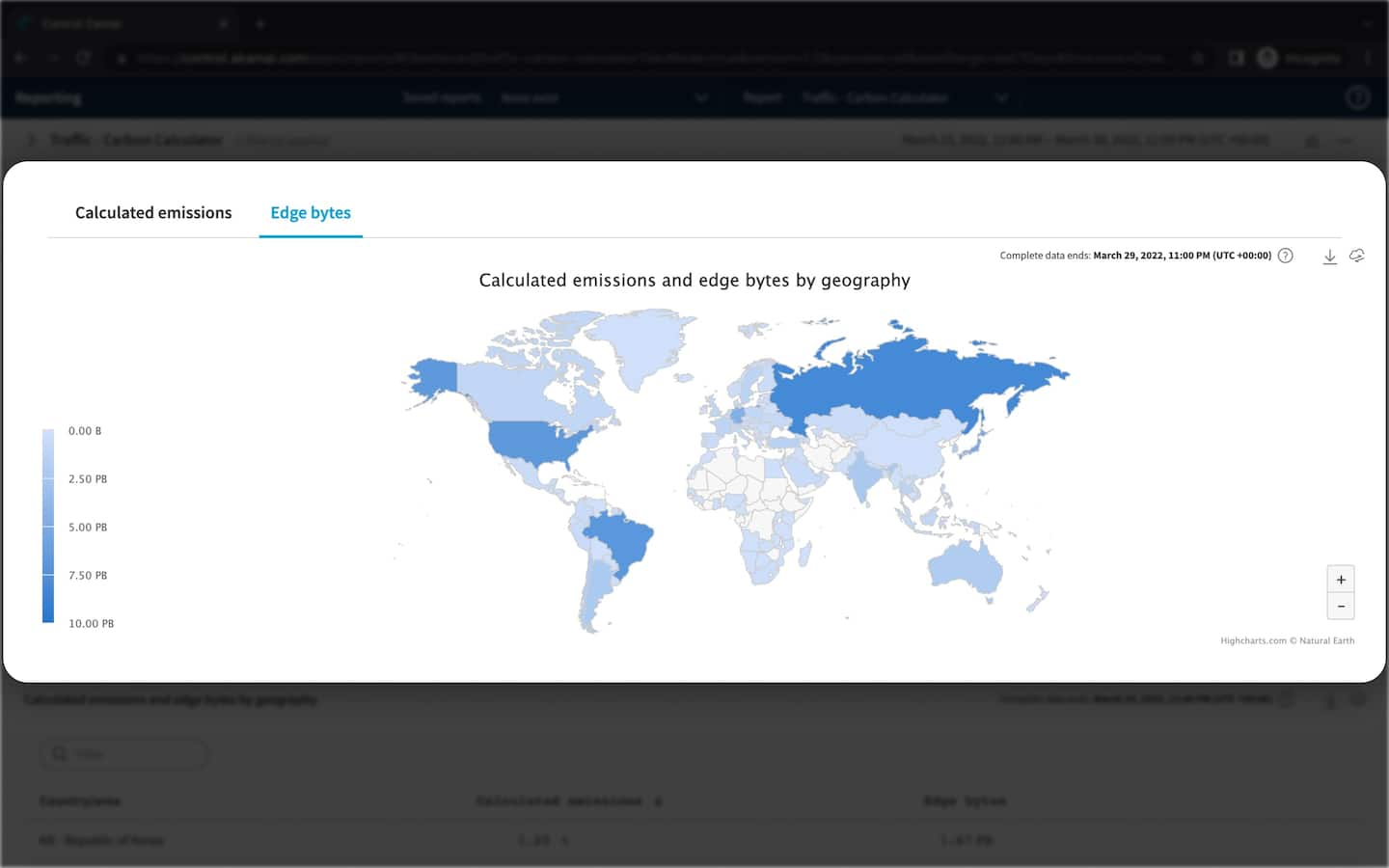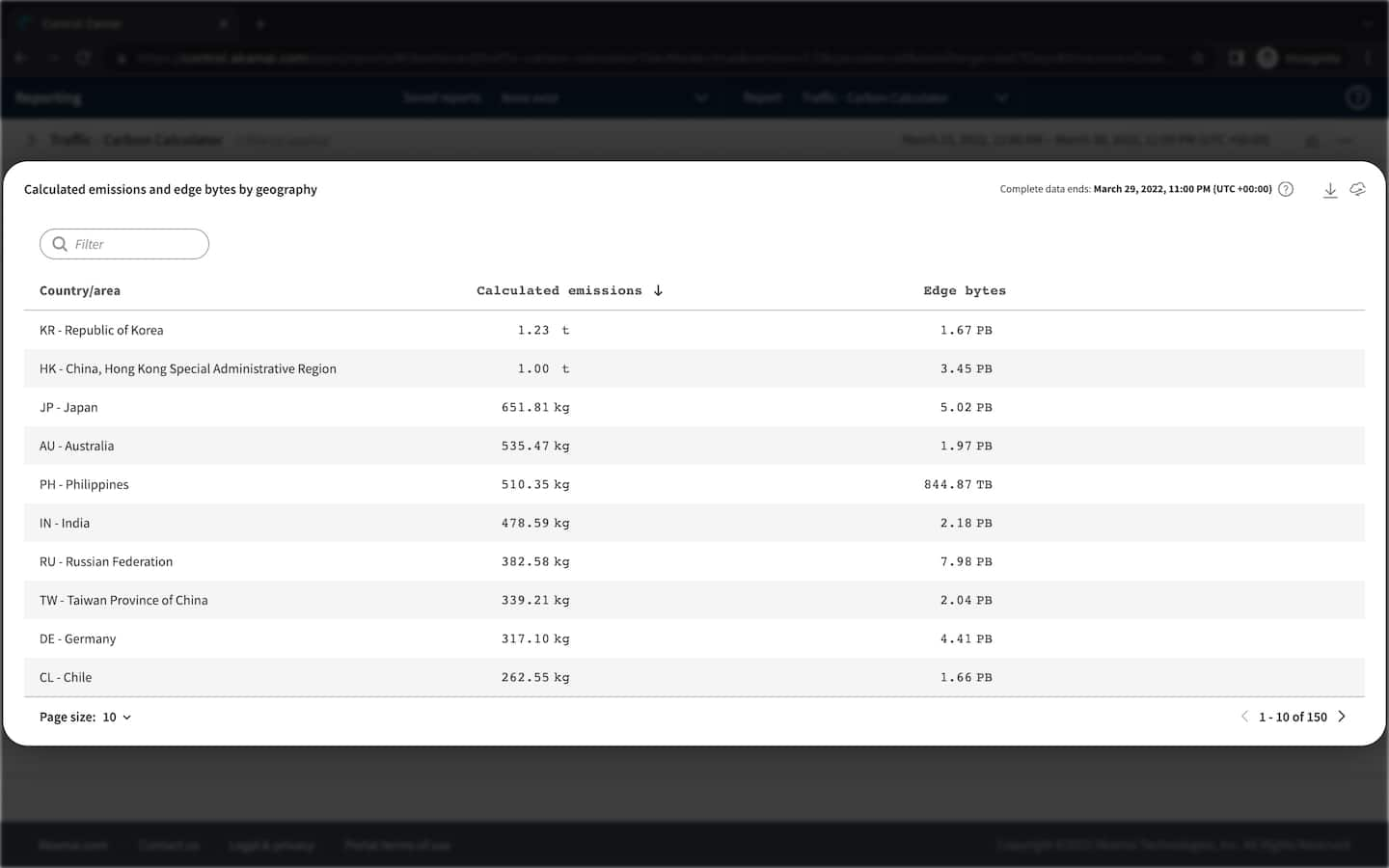Demystify Supply Chain Emissions with Akamai’s New Carbon Calculator

Today’s business is interconnected; modern supply chains are complex and diverse, and are emerging as an area that’s ripe for sustainable advancement.
Oftentimes, organizations view supply chains as an extension of their own business and require suppliers to adhere to codes of conduct, efficiency standards, and more. Today, this has expanded to environmental sustainability goals as well. Companies understand that the environmental impact of their economic activity is not limited to their direct operations. It’s integral to look beyond direct emissions and risks to the entire value chain.
McKinsey says it best: “[Six] years on from the Paris Agreement, governments, regulators, investors, and customers are increasingly demanding that business play its full part in global efforts to tackle climate change. Companies are responding with a wave of public commitments to ongoing emissions reductions.”
Understanding supply chain emissions
Organizations framed their commitments around the Greenhouse Gas (GHG) Protocol’s Scope 1 and Scope 2 emissions. These are emissions produced directly by companies or indirectly through the purchase of energy.
However, a more modern approach includes Scope 3 emissions generated in the upstream and downstream value chain. A total of 94% of companies signed up to the Science Based Targets Initiative, including commitments to reducing emissions at customers and suppliers.
This will make quite the impact, especially since supply chain emissions are 11.4 times higher than operational emissions, on average, which equates to approximately 92% of an organization's total GHG emissions, according to the CDP 2020 Global Supply Chain Report.
Enter Akamai’s Carbon Calculator
We know what it's like to rely on suppliers for emissions information. That’s why we developed the Carbon Calculator, an emissions calculator based on customers’ usage of the Akamai platform, and integrated it into the Akamai Control Center. It is available for all customers using delivery products.
The Carbon Calculator can be found under the Traffic Reports section of the main portal menu. If you are already viewing a report in the Traffic Reports section, you can use the top-bar navigation to select the Carbon Calculator report.
Once you reach the report, you'll be prompted to select a subset of your traffic, designated in terms of content provider codes (CP codes). You can also adjust the date range — the report defaults to the last 48 hours and you can select up to 3 months of data (data is available from March 2, 2022). Other available filters are delivery type (secure/unsecure traffic) and country/area. Now, you're ready to run the report.
 Fig. 1: Calculated emissions and edge bytes as summary metrics and by time
Fig. 1: Calculated emissions and edge bytes as summary metrics and by time
Summary-level metrics
Once you've run the report, at the top you will see summary-level metrics for your selected filters: the total bytes delivered from the Akamai edge, and the total calculated emissions in terms of grams, kilograms, and metric tonnes of CO2 equivalency. You'll also see bytes and calculated emissions for your selected time range, presented with 1-day granularity. Hovering over each data point will provide the total bytes and calculated emissions for that day.
 Fig. 2: Visualization of calculated emissions by country/area
Fig. 2: Visualization of calculated emissions by country/area
 Fig. 3: Visualization of edge bytes by country/area from where traffic is served
Fig. 3: Visualization of edge bytes by country/area from where traffic is served
Worldwide view of calculated emissions
The report also offers a worldwide view of bytes and calculated emissions, broken down by country. There are two tabs available above the map visualization, showing calculated emissions worldwide and edge bytes worldwide, and the differences between countries for these values. On the Calculated emissions tab, the map will be colored from green (lower emissions) to orange (higher emissions), while on the Edge bytes tab, the map will be colored from light blue (lower bytes) to dark blue (higher bytes).
The scale is colored dynamically, so if additional filters are applied, or more CP codes are added, the scale will be redistributed and the map may show a different color for the same country. Hovering over the map will show the specific values for that country/area. You can also double click on a given country/area, which will apply that filter to all of the data in the report.
Below the map you can see the table for edge bytes and calculated emissions by country, which you can sort by each metric to see the highest or lowest value and associated country. This allows you to see the emissions efficiency in a given country/area, where relatively more bytes are being delivered with a smaller emissions impact.
 Fig. 4: Tabular form of calculated emissions and edge bytes by country/area
Fig. 4: Tabular form of calculated emissions and edge bytes by country/area
The data is also available in different formats. In addition to the UI report, you can download the data for each widget in a CSV format by clicking the arrow icon, or click the cloud icon to see the required API call with the request body to get the data programmatically.
Have questions, comments, or want to chat?
Reach out to sustainability@akamai.com. We'd love to hear from you.





